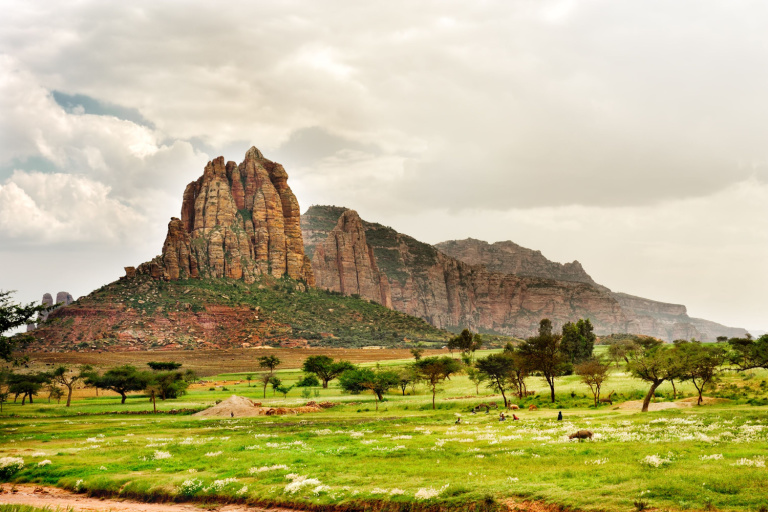
WitR/Shutterstock
When Is the Best Time to Visit Ethiopia?
The best time to visit Ethiopia is during the dry season, which runs from October to May. During this time, the weather is mild and sunny, with less rainfall and humidity. This makes it ideal for game viewing, outdoor activities, and sightseeing.
Here is a more detailed breakdown of the best time to visit Ethiopia, according to region:
- North Ethiopia: The best time to visit northern Ethiopia is during the dry season, from October to April. During this time, the weather is mild and sunny, with less rainfall and humidity. This makes it ideal for game viewing in Simien Mountains National Park, one of the best places in Africa to see Ethiopian wolves and geladas.
- Central Ethiopia: The best time to visit central Ethiopia is also during the dry season, from October to April. During this time, the weather is mild and sunny, with less rainfall and humidity. This makes it ideal for visiting the Omo Valley, a region known for its diverse cultures and traditional villages.
- Southern Ethiopia: The best time to visit southern Ethiopia is during the dry season, from October to March. During this time, the weather is mild and sunny, with less rainfall and humidity. This makes it ideal for visiting Bale Mountains National Park, a region known for its stunning scenery and wildlife, including mountain nyala and Ethiopian wolves.
No matter what time of year you choose to visit Ethiopia, you’re sure to have a wonderful time. The country has something to offer everyone, from its stunning scenery and diverse wildlife to its rich cultures and delicious food.
 Average Temperatures by Month
Average Temperatures by Month
|
Jan |
Feb |
Mar |
Apr |
May |
Jun |
Jul |
Aug |
Sep |
Oct |
Nov |
Dec |
| Fahrenheit |
54°
|
58°
|
63°
|
68°
|
77°
|
86°
|
91°
|
91°
|
84°
|
73°
|
62°
|
55°
|
| Celsius |
12°
|
14°
|
17°
|
20°
|
25°
|
30°
|
33°
|
33°
|
29°
|
23°
|
17°
|
13°
|
Climate in Ethiopia
Summer Season in Ethiopia
Ethiopia's summer season occurs from June to September and is characterized by warmer temperatures, ranging from 68°F to 77°F. While it's not excessively hot, it's the country's rainy season, with heavy downpours that can lead to travel disruptions. However, it's the perfect time to witness the breathtaking landscapes as the countryside turns lush and green.
Rainy Season in Ethiopia
Ethiopia experiences a significant rainy season during the summer months, from June to September. The country's highlands and central regions receive the most rainfall, making it a great time for agricultural activities and enjoying the verdant scenery. However, some areas may experience occasional flooding.
Winter Season in Ethiopia
Ethiopia's winter season, from October to May, offers milder and drier conditions, with temperatures between 59°F and 77°F. This is the best time for exploring historical sites, like Lalibela's rock-hewn churches, trekking in the Simien Mountains, or visiting the unique tribes in the Omo Valley. The dry weather and pleasant temperatures make it an ideal period for outdoor adventures and cultural explorations.
Our Recommendations
| Destination |
Jan |
Feb |
Mar |
Apr |
May |
Jun |
Jul |
Aug |
Sep |
Oct |
Nov |
Dec |
| Ethiopia |
 |
 |
 |
 |
 |
 |
 |
 |
 |
 |
 |
 |






